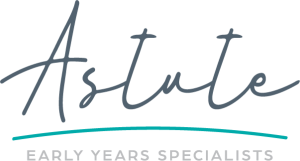
By Kylie Dawson
1. DO NOT document regulatory requirements as a strength (these are the minimum and expected requirements).
2. DO NOT set a goal that is focused on meeting a regulatory requirement. Develop an immediate action plan to address the issue and to ensure you maintain compliance with regulatory requirements at all times.
3. Tell the reader a story! If one of your strengths is your commitment to sustainability, tell the reader about this journey and make them really excited to come and see what you do in action!
4. Be very specific about your goals! “Do more critical reflection” is a bit like “Eat less chocolate at Easter”. You need to be clear and succinct. So, if I wanted to eat less chocolate at Easter I would set a goal such as “Enjoy five 100g chocolates for Easter”. Similarly, if you have goals to achieve around critical reflection, then drill down to what you actually want to do and achieve. For example, you might want to “Engage in a dedicated professional learning experience focused on building skills in critical reflection”. That could be your first step, and once that goal is completed, the next step might be “Ask all educators to use the model of critical reflection that we learnt about in the professional development course to reflect on a routine such as nappy changing or meal times and to share their thoughts and reflections within their room team”.
5. Include photos! When you tell me the story of how you identified that a space at the side of your building that could be transformed into something more enjoyable and you asked the children what they wanted, and they said they wanted to build a fairy garden that also grew herbs, include some before, during and after photos.
6. You do not have to document every single thing you do – the AO is going to come and see your service, spend time there, ask questions, and give you the opportunity to provide documentation. Use your QIP to entice the AO and to set the scene for what they are going to experience and observe when they come to your centre.
7. Provide examples, don’t just write statements. For example, if you write “We strive to provide families with connections to supportive services in the community”, don’t just end it at that, tell me what you do. For example, “We strive to provide families with connections to supportive services in the community. One of the ways we do this is to invite an OT, Speech Therapist, Dentist and Children’s Physio to the centre to deliver a Family Information Session. During the session we offer caring services for the children if their parents need to bring them along”.
8. You can, and should have, a goal for every quality area, BUT you do not need to be actively working on a goal for every quality area all at the same time. You might have one goal from QA 2 and QA 7 that you are working on at the same time, and once the goal from QA 2 has been achieved, you can then engage in a reflection and review and determine the next goal, which may be one from QA 4.
9. Find and use efficient and effective time and project management approaches. For example, if your QA 3 goal is to establish and maintain a composting system, break down all the steps that need to be completed, determine who is responsible for what, set time frames, and document this. You could map this up on a whiteboard in the staff room, or you could have a large A3 scrap book that is on display in the staffroom. Keeping it visible, and ensuring it is updated, is critical for moving forward with achieving the goal.
10. Ask families and children what goals they think should be focused on. Put out a post on StoryPark, or via email. Set up a post-it-note display in the foyer, or focus on having 1-1, or small group conversations, with children. Document these engagements, feedback to families and children what suggestions you are going to use, and include them in the planning and implementation wherever possible.
